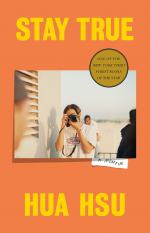|
This section contains 637 words (approx. 2 pages at 400 words per page) |

|
Stay True Summary & Study Guide Description
Stay True Summary & Study Guide includes comprehensive information and analysis to help you understand the book. This study guide contains the following sections:
This detailed literature summary also contains Topics for Discussion on Stay True by Hua Hsu.
The following version of this book was used to create this guide: Hsu, Hua. Stay True. Doubleday, 2022.
Hua Hsu’s memoir opens during his college years at the University of California, Berkeley. Hsu and several others, including his best friend Ken, took a brief road trip at the end of the semester. Hsu discusses the retrospective importance of the photographs they took on this trip.
In 1965, Hsu’s father left Taiwan for the United States. As the years progressed, his father slowly “acquired various characteristics that might have marked him as an American” (12). In 1971, Hsu’s mother, also Taiwanese, enrolled at a school in Illinois. Hsu’s parents later met at the university and soon married. Hsu notes that both his parents came to the United States for the “chance for something different” (15). His parents moved frequently before settling in Cupertino to raise Hsu.
As an adolescent, Hsu bonded with his father over music. He often noted the differences between himself and his immigrant parents. In the early nineties, Hsu grew interested in indie music and alternative culture. He spent much of his time making zines. During his first days at Berkeley, Hsu met Ken, a Japanese American student who Hsu derides as overwhelmingly “mainstream” (40). Ken was confident, handsome, and extremely social; Hsu believed that their experiences of America were fundamentally different. Slowly, Ken and Hsu grew close, often smoking cigarettes together.
As their sophomore year approached, Hsu and Ken talked about their hopes for the future. They continued to bond over their shared passion for film and cultural theory. Hsu, reflecting on this period, discusses friendship as “the willingness to know, rather than be known” (73). Hsu became involved in political causes on campus; his zines reflected his new political awareness.
During his junior year, Hsu began working for a community center serving Southeast Asian middle schoolers. He spent time on the internet in its early days; looking back, he reflects on the nature of community and gift-giving. Hsu visited Ken at his family’s home in Southern California during his winter break, where they continued to “[come] up with brilliant theories but forgot to write them down” (100).
That summer, Ken and Hsu began to write a movie together. Hsu started to date a woman named Mira. One night in July, Ken threw a housewarming party at his new apartment. Hsu left early and later slept at Mira’s house, where they had sex for the first time. Two days later, Hsu learned that three individuals kidnapped Ken and killed him, in an apparent carjacking. Hsu, consumed with guilt and grief, “became obsessed with the possibility of a sentence that could wend its way backward” (119).
In the wake of Ken’s death, Hsu and his other friends were “inseparable” (135). They attended Ken’s funeral, where Hsu delivered a eulogy pulling from friends’ memories of Ken. Hsu continued to work at the community center; he opened up to his students about his life and his grief. As his senior year progressed, Hsu feared that his continual grief meant that he “had stubbornly chosen to stay [in the past]” (147). He often wrote to Ken in his journal and became convinced that the world was simply “fucked up” (153). He read about gruesome events and struggled to understand his friend’s death. Mira eventually broke up with Hsu. Hsu began volunteering at a prison near campus, where he connected with the inmates.
After graduation, Hsu enrolled at Harvard University as a PhD student. He searched online for more information about Ken’s death and his killers. During his second year of graduate school, Hsu started to attend therapy, where he realized that it “was pointless to feel guilty” (184) about Ken’s death. At the end of his time in therapy, Hsu resolved to “write about all this one day” (193).
Read more from the Study Guide
|
This section contains 637 words (approx. 2 pages at 400 words per page) |

|



